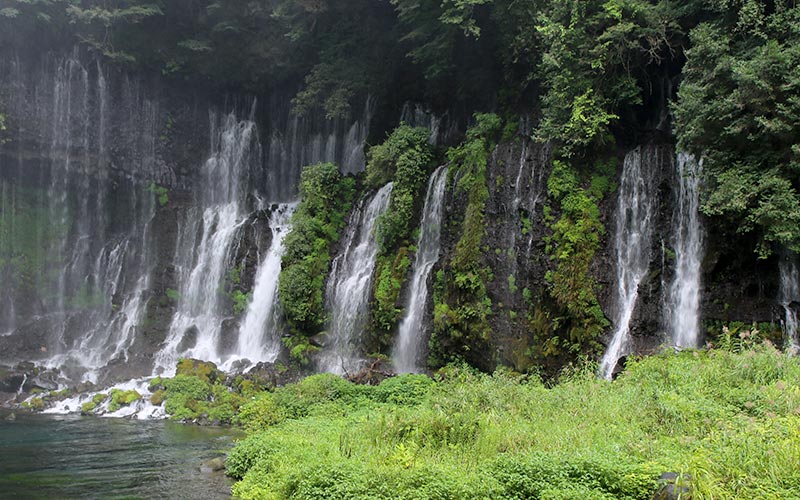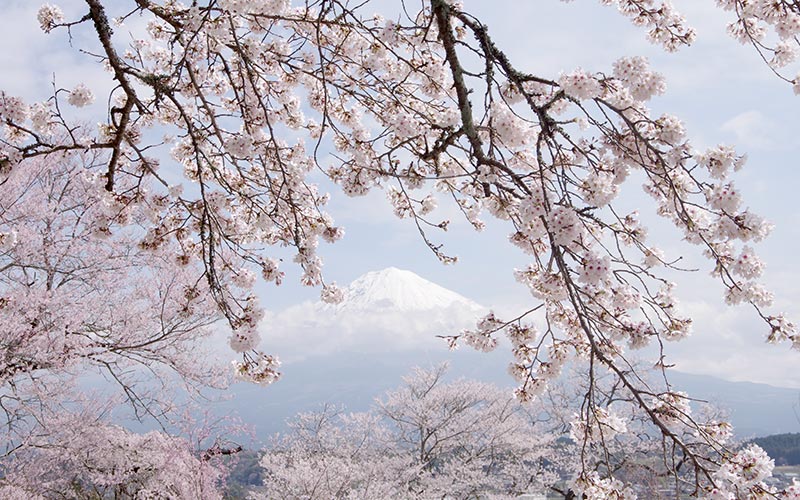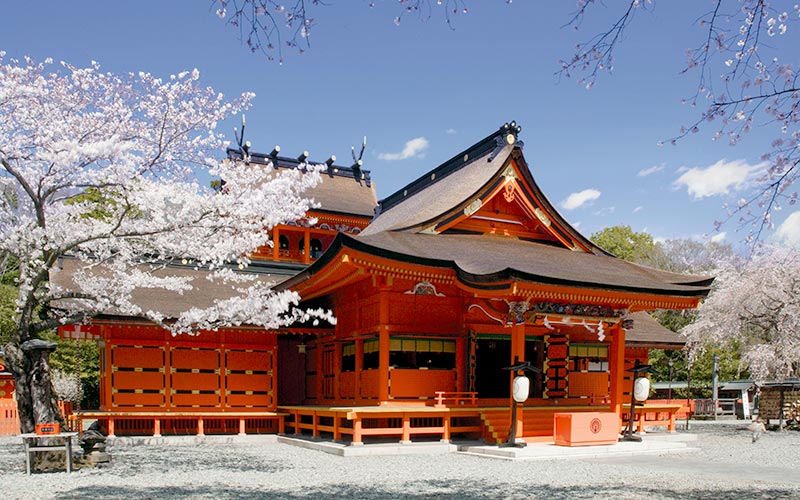
 Audio guide Otono
Audio guide Otono We can assure that you are going to feel like going back in time by listening to them!

One of the most famous waterfalls in Japan, beautiful Shiraito Falls is so named because its trails of water resemble “white threads.” Thousands of small streams trickle through the layers of Mt. Fuji, and the number of waterfalls increases in the springtime due to the melting snow.
Mt. Fuji, to us, is the provider of many blessings. One of the most precious of these is our water. Mt. Fuji as a whole is said to receive 2.2 billion tons of precipitation each year, yet we see no rivers flowing around the mountain. So where does the water go? Scientists believe that the rain seeps slowly through the Shin-Fuji Volcano, all the way to the layers of Old-Fuji. However, a mud “filter”allows only slow, relatively poor penetration.
The water continues to push through the layers of sediment, and eventually bursts out into the Mt. Fuji surroundings as spring water. Mt. Fuji is, in someway, a “mountain of water.” Furthermore, the mosses and soils of the forest provide us with water that is rich in minerals. They also help prevent erosion thanks to their role as a natural dam of sorts, which slows water penetration.

Buddhism is one of the most popular religions in Japan. It was introduced to Japan about 1400 years ago. Buddhism mostly relates to the life after death. Over 80% of Japanese people have their funerals with Buddhism style.
This“Kotokuji-Temple”has the history of over 1300 years. This temple is open for everyone by the good will of the Buddhist monk. Enjoy this amazing view of Mount Fuji, which looks different in every season, or even everyday.

In June 2013, Mt. Fuji “Fujisan, sacred place and source of artistic inspiration” was inscribed as a UNESCO World Cultural Heritage Site. This center was built as a key facility for conveying this idea. Opened in December 2017, this unique architecture is highly praised. The central exhibition building is distinguished by its unique form, featuring and inverted cone with exterior walls of latticed wood This wood is Hinoki cypress from Mt. Fuji. Inside the center, the history, culture and nature of Mt. Fuji are introduced. You can even simulate climbing Mt.Fuji.
Please do not forget to take the wooden Mt.Fuji reflected in the water!

Sometimes nature strikes us with disaster. Japan in particular is a country that is never far removed from natural disasters like typhoons, earthquakes, and volcanic activity. Towards these overwhelming forces of nature the Japanese people are fearful, respectful, and worshipful of them as gods. The belief in the existence of numerous gods dwelling in everything such as mountains, rivers, and even water have spread throughout the land and developed in to the native Japanese belief of “Shinto.” Shinto shrines stand in many areas all throughout Japan. Even today, seasonal Shinto festivals are held to celebrate a good harvest, and to thank the gods responsible.